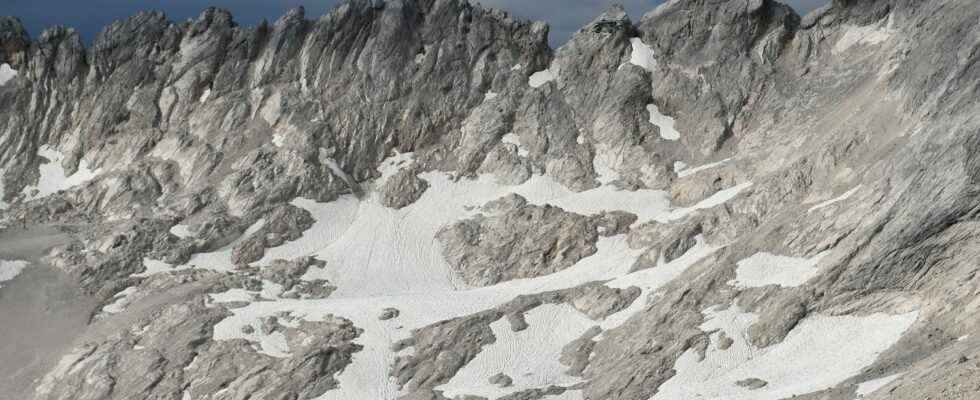The southern part of the Schneeferner glacier, in the Bavarian Alps (Germany), melted at an accelerated rate during this particularly hot summer. And according to the Bavarian Academy of Sciences, which published a press release on Monday, September 26, it has permanently lost its status as a glacier.
>> REPORT. “If we have several summers like that, it’s the end of the glaciers”: in the Ecrins massif, heat waves threaten the white giants
The thickness of the ice no longer even reaches two meters in many places, and less than six meters in the deepest places, according to ground-penetrating radar measurements carried out in September. In 2018, she was still ten meters, recalls the academy in a press release.
“We deduce that the rest of the ice will have completely melted within one or two years”she adds. “At the same time, the surface of the glacier has shrunk to less than 1 hectare, which is about half of what it was in 2018.”
There therefore remain officially four sites still fulfilling the criteria for glaciers in Bavaria: the northern part of the Schneeferner, the Höllentalferner, on the famous Zugspitze massif (2,962 m altitude) and the glaciers of Watzmann (2,713 m) and Blaueis (2,607 m), on the Berchtesgarden massif.
A report released two years ago by the regional government warned of a faster-than-expected melting of glaciers, the last of which could disappear completely within a decade, while earlier estimates had put the fateful date at 2050 . “Climate change is hitting the Bavarian glaciers hard”local Environment Minister Thorsten Glauber said at the time.
The melting of glaciers in the Alps and elsewhere in the world, attributed to global warming, has been closely monitored since the early 2000s. Two years ago, a study published in the journal Nature revealed that their rapid melting over the past 20 years was now contributing to more than 20% of sea level rise.
